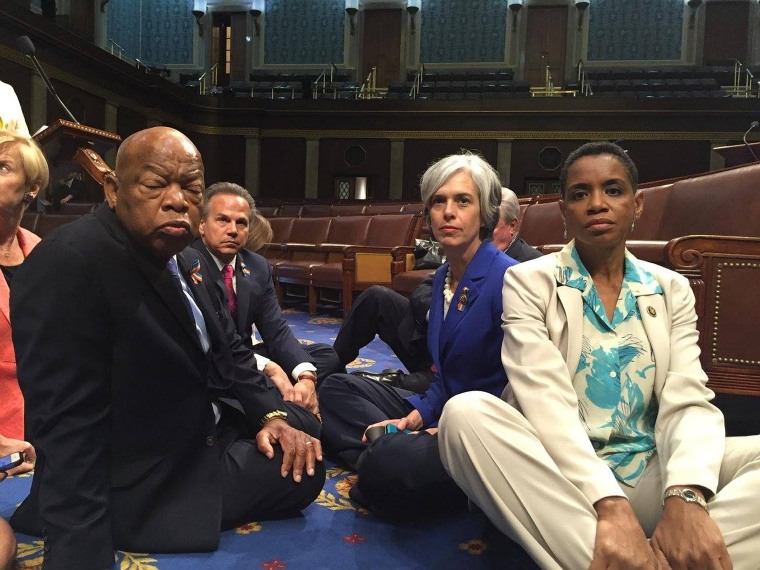As Democratic lawmakers in the House of Representatives held a more than 24-hour sit-in for gun control legislation, social media and live video took on a key role in getting the word out.
While video clips embedded in social media feeds have been commonplace since at least the Ice Bucket Challenge, the events on Wednesday and Thursday unfolded in a somewhat surreal fashion, with Democratic representatives digging in even though the House is officially on recess until July 5.
Although C-Span’s official camera feed was turned off around midday Wednesday, the network took the unprecedented step of broadcasting a patchwork of lawmakers’ live video feeds on social media. With members using their phones to stream the activity, primarily via Periscope and Facebook, participating lawmakers hope that keeping their fight in public consciousness will elicit greater support.
Read More: #NoBillNoBreak Sit-In at House of Representatives Gets Celeb Support
“I do think after they come back from recess, the issue will still be front and center,” said Molly Reynolds, a fellow in governance studies at the Brookings Institution. “The ability to livestream video from the floor has been a huge part of that."
This already was shaping up to be an election year dominated by opinions declared on Facebook and barbs traded via Tweet, but political as well as digital media experts say livestreamed video was the engine driving the sit-in to public attention.
“The platform we all have at our fingertips and the power we have in our phones to be able to broadcast out that information wherever we are is incredibly powerful and really changes the dynamic,” said Michael Ashford, vice president of marketing strategic partnerships at Granicus, Inc., a technology company that makes software for streaming public sector events.
Now, Ashford said, someone doesn’t need expensive hardware, video skills or dedicated software to produce video. They just need a phone and a social network profile.
Although social media has been credited with giving voice to social and political movements before, most notably during the Arab Spring in 2011, video adds a potent new tool.
“When we see actual video, it really hammers home, even more than just still images or text, exactly what’s happening,” Reynolds said.
Read More: 'Spirit of History': House Democrats Hold Sit-In on Gun Control
Although streaming video is a newer technology, it’s a more intuitive way for people to communicate, said John Quelch, a marketing professor at Harvard Business School.
“Moving video is more powerful than still pictures because the world is moving around us. It’s just more of a reflection in the way we interact with one another,” he said.
Unlike still photos, video cultivates intimacy and immediacy, he said.
“I think there’s an expectation of greater transparency and greater access,” he said, and even the technical flaws viewers must endure — shaky images, intermittent sound quality, occasional cutting out — satisfy an audience that prizes authenticity above all else.
“It feels very in the moment, I think. It feels like you’re almost there and a part of whatever’s happening,” Ashford said.
